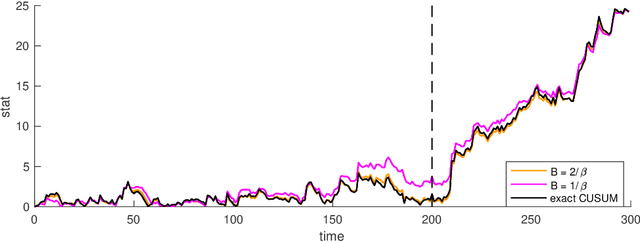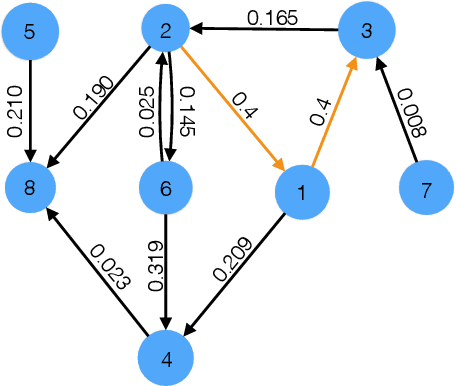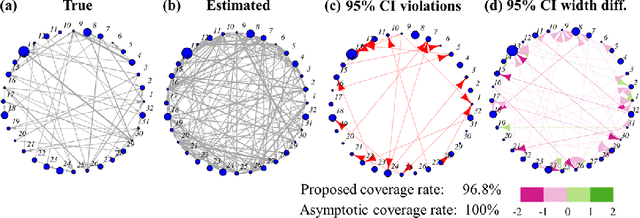Haoyun Wang
MultiPDENet: PDE-embedded Learning with Multi-time-stepping for Accelerated Flow Simulation
Jan 27, 2025Abstract:Solving partial differential equations (PDEs) by numerical methods meet computational cost challenge for getting the accurate solution since fine grids and small time steps are required. Machine learning can accelerate this process, but struggle with weak generalizability, interpretability, and data dependency, as well as suffer in long-term prediction. To this end, we propose a PDE-embedded network with multiscale time stepping (MultiPDENet), which fuses the scheme of numerical methods and machine learning, for accelerated simulation of flows. In particular, we design a convolutional filter based on the structure of finite difference stencils with a small number of parameters to optimize, which estimates the equivalent form of spatial derivative on a coarse grid to minimize the equation's residual. A Physics Block with a 4th-order Runge-Kutta integrator at the fine time scale is established that embeds the structure of PDEs to guide the prediction. To alleviate the curse of temporal error accumulation in long-term prediction, we introduce a multiscale time integration approach, where a neural network is used to correct the prediction error at a coarse time scale. Experiments across various PDE systems, including the Navier-Stokes equations, demonstrate that MultiPDENet can accurately predict long-term spatiotemporal dynamics, even given small and incomplete training data, e.g., spatiotemporally down-sampled datasets. MultiPDENet achieves the state-of-the-art performance compared with other neural baseline models, also with clear speedup compared to classical numerical methods.
Online Detection Of Supply Chain Network Disruptions Using Sequential Change-Point Detection for Hawkes Processes
Nov 22, 2022Abstract:In this paper, we attempt to detect an inflection or change-point resulting from the Covid-19 pandemic on supply chain data received from a large furniture company. To accomplish this, we utilize a modified CUSUM (Cumulative Sum) procedure on the company's spatial-temporal order data as well as a GLR (Generalized Likelihood Ratio) based method. We model the order data using the Hawkes Process Network, a multi-dimensional self and mutually exciting point process, by discretizing the spatial data and treating each order as an event that has a corresponding node and time. We apply the methodologies on the company's most ordered item on a national scale and perform a deep dive into a single state. Because the item was ordered infrequently in the state compared to the nation, this approach allows us to show efficacy upon different degrees of data sparsity. Furthermore, it showcases use potential across differing levels of spatial detail.
Neural Spectral Marked Point Processes
Jun 20, 2021



Abstract:Self- and mutually-exciting point processes are popular models in machine learning and statistics for dependent discrete event data. To date, most existing models assume stationary kernels (including the classical Hawkes processes) and simple parametric models. Modern applications with complex event data require more general point process models that can incorporate contextual information of the events, called marks, besides the temporal and location information. Moreover, such applications often require non-stationary models to capture more complex spatio-temporal dependence. To tackle these challenges, a key question is to devise a versatile influence kernel in the point process model. In this paper, we introduce a novel and general neural network-based non-stationary influence kernel with high expressiveness for handling complex discrete events data while providing theoretical performance guarantees. We demonstrate the superior performance of our proposed method compared with the state-of-the-art on synthetic and real data.
Sequential change-point detection for mutually exciting point processes over networks
Feb 10, 2021



Abstract:We present a new CUSUM procedure for sequentially detecting change-point in the self and mutual exciting processes, a.k.a. Hawkes networks using discrete events data. Hawkes networks have become a popular model for statistics and machine learning due to their capability in modeling irregularly observed data where the timing between events carries a lot of information. The problem of detecting abrupt changes in Hawkes networks arises from various applications, including neuronal imaging, sensor network, and social network monitoring. Despite this, there has not been a computationally and memory-efficient online algorithm for detecting such changes from sequential data. We present an efficient online recursive implementation of the CUSUM statistic for Hawkes processes, both decentralized and memory-efficient, and establish the theoretical properties of this new CUSUM procedure. We then show that the proposed CUSUM method achieves better performance than existing methods, including the Shewhart procedure based on count data, the generalized likelihood ratio (GLR) in the existing literature, and the standard score statistic. We demonstrate this via a simulated example and an application to population code change-detection in neuronal networks.
Adaptive Algorithms for Multi-armed Bandit with Composite and Anonymous Feedback
Dec 15, 2020



Abstract:We study the multi-armed bandit (MAB) problem with composite and anonymous feedback. In this model, the reward of pulling an arm spreads over a period of time (we call this period as reward interval) and the player receives partial rewards of the action, convoluted with rewards from pulling other arms, successively. Existing results on this model require prior knowledge about the reward interval size as an input to their algorithms. In this paper, we propose adaptive algorithms for both the stochastic and the adversarial cases, without requiring any prior information about the reward interval. For the stochastic case, we prove that our algorithm guarantees a regret that matches the lower bounds (in order). For the adversarial case, we propose the first algorithm to jointly handle non-oblivious adversary and unknown reward interval size. We also conduct simulations based on real-world dataset. The results show that our algorithms outperform existing benchmarks.
Uncertainty Quantification for Inferring Hawkes Networks
Jun 12, 2020
Abstract:Multivariate Hawkes processes are commonly used to model streaming networked event data in a wide variety of applications. However, it remains a challenge to extract reliable inference from complex datasets with uncertainty quantification. Aiming towards this, we develop a statistical inference framework to learn causal relationships between nodes from networked data, where the underlying directed graph implies Granger causality. We provide uncertainty quantification for the maximum likelihood estimate of the network multivariate Hawkes process by providing a non-asymptotic confidence set. The main technique is based on the concentration inequalities of continuous-time martingales. We compare our method to the previously-derived asymptotic Hawkes process confidence interval, and demonstrate the strengths of our method in an application to neuronal connectivity reconstruction.
Musical Instrument Classification via Low-Dimensional Feature Vectors
Sep 16, 2019



Abstract:Music is a mysterious language that conveys feeling and thoughts via different tones and timbre. For better understanding of timbre in music, we chose music data of 6 representative instruments, analysed their timbre features and classified them. Instead of the current trend of Neural Network for black-box classification, our project is based on a combination of MFCC and LPC, and augmented with a 6-dimensional feature vector designed by ourselves from observation and attempts. In our white-box model, we observed significant patterns of sound that distinguish different timbres, and discovered some connection between objective data and subjective senses. With a totally 32-dimensional feature vector and a naive all-pairs SVM, we achieved improved classification accuracy compared to a single tool. We also attempted to analyze music pieces downloaded from the Internet, found out different performance on different instruments, explored the reasons and suggested possible ways to improve the performance.
 Add to Chrome
Add to Chrome Add to Firefox
Add to Firefox Add to Edge
Add to Edge